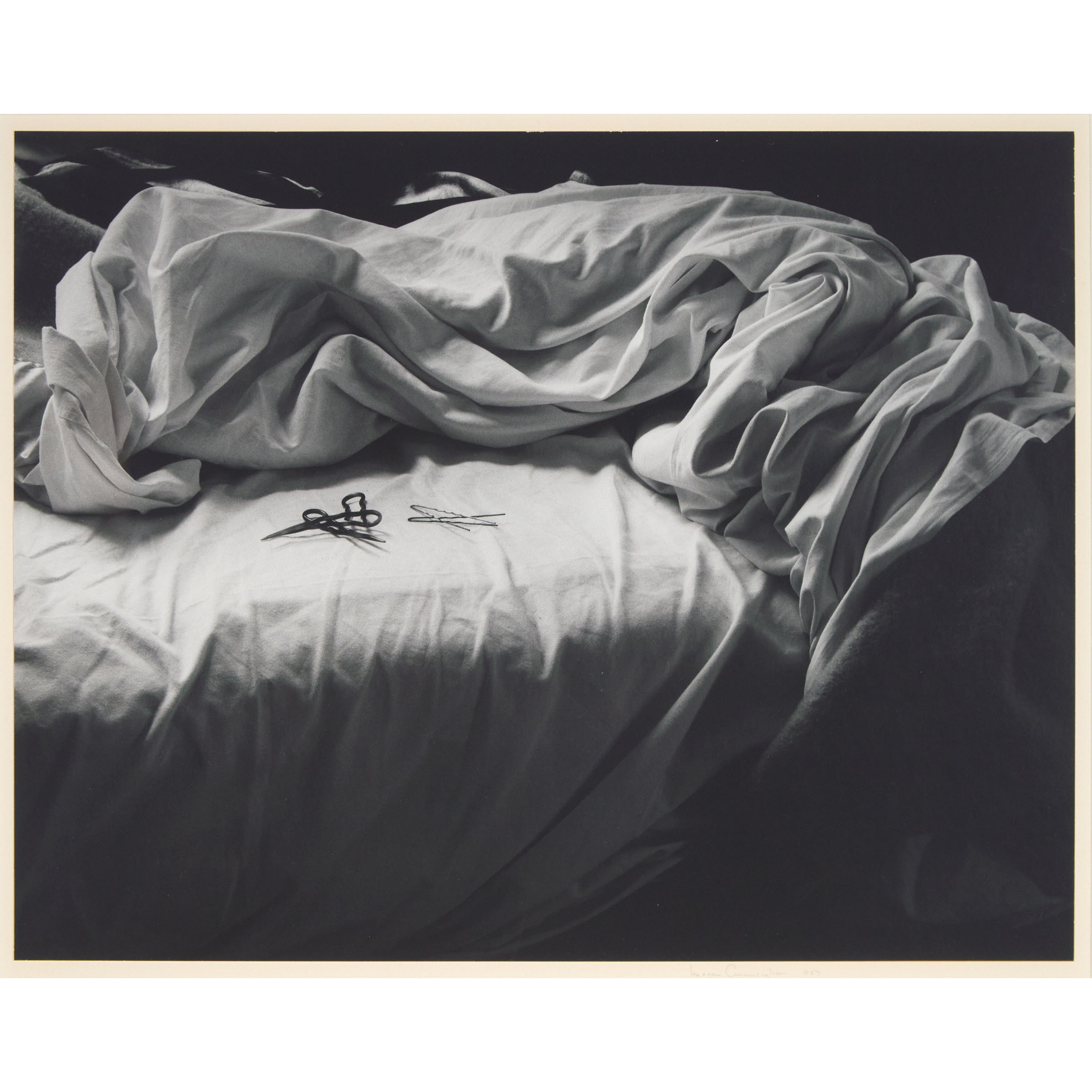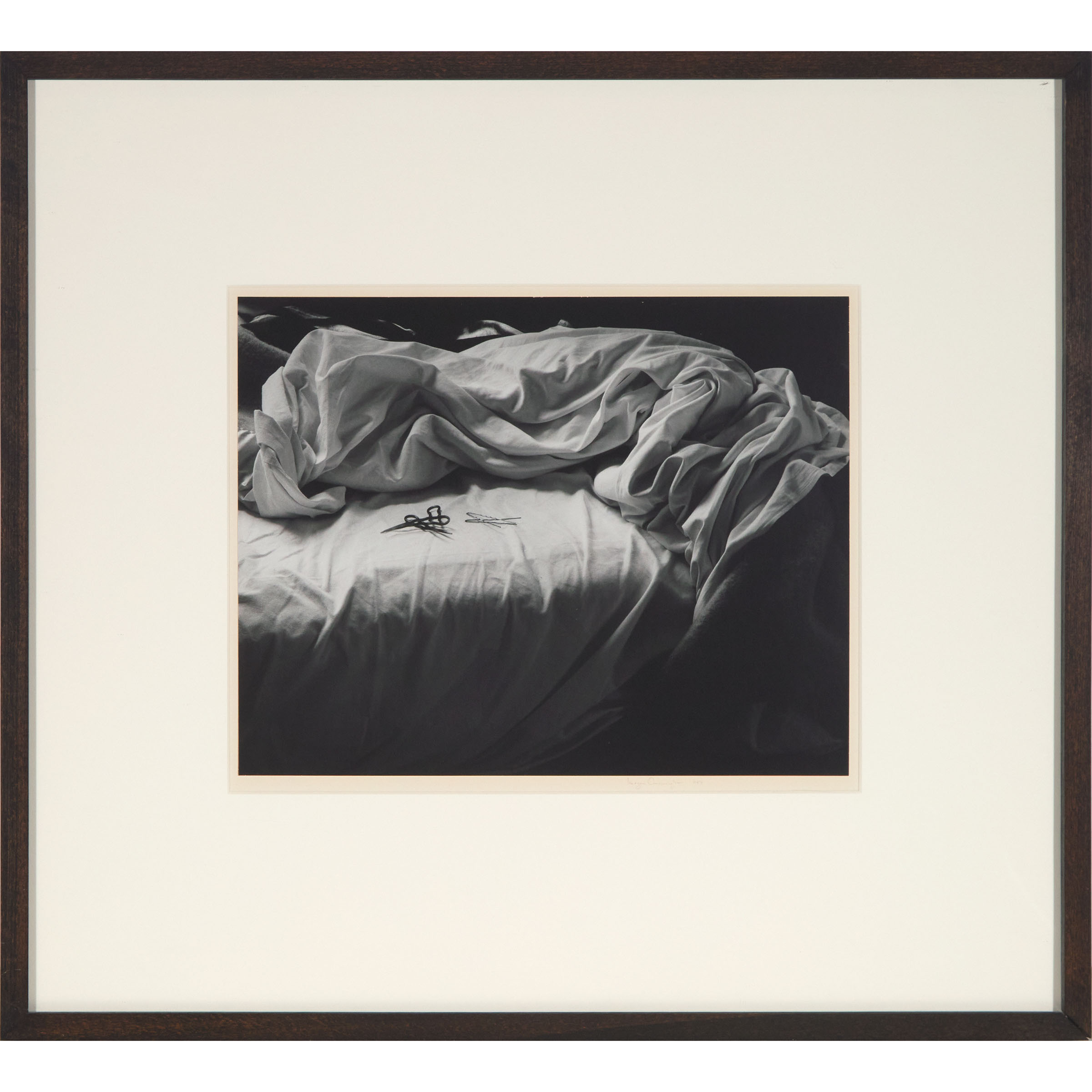Lot 42
Imogen Cunningham (1883-1976)

Lot 42 Details
Imogen Cunningham (1883-1976), American
THE UNMADE BED, 1957
gelatin silver print
signed and dated to mat; titled to trust label verso
10.5 x 13.5 in — 26.7 x 34.3 cm
Estimate $15,000-$20,000
Additional Images

Provenance:
Art Mûr, Montreal, QC
Private Collection, Montreal, QC
Note:
With varied subjects including portraits, nudes, florals, and street photography, Imogen Cunningham was a prolific artist. Though born in 1883, Cunningham was a pioneer of the 20th century as well as a feminist icon. Cunningham disregarded the opposition between men and women. Alex Greenberger writes that “Early on, in 1913, she wrote a manifesto called “Photography as a Profession for Women.” She insisted that women were just as physically able to undertake the then-laborious process of shooting and developing photographs and that the two genders had different but equally worthy forms of expression.” (1)
Cunningham wanted to be a photographer from a young age. At the time, photography was not offered as a course, so she enrolled at the University of Washington as a chemistry student to better understand film and the chemical processes of photography. After a two-year stay in Dresden, Germany, under the tutelage of Dr. Robert Luther at the Technische Hochschule, Cunningham became proficient in platinum printing. Returning to the United States in 1910, the artist started her own studio in Seattle, producing images in line with the Pictorialist movement.
After a brief stay in San Francisco, Cunningham settled in Oakland, where her initial interest in floral photography began in the late 1910s. Occupied with raising her children, Cunningham was tethered to her home, which sparked an interest in gardening. Far from impeding her artistic practice, this newfound passion led her towards a new vein – her floral works. “Magnolia Blossom,” 1925, is the result of her many experiments, and is a detailed and modernist picture which echoes Georgia O’Keeffe’s celebrated paintings. (2) With a botanist’s clinical approach, her work from the 1920s is clear and detailed, and the roots of Modernism can be observed. (3)
Cunningham became one of the founding members of the Group f/64 in 1932, along with Ansel Adams, John Paul Edwards, Preston Holder, Consuelo Kanaga, Alma Lavenson, Sonya Noskowiak, Henry Swift, Willard Van Dyke, Brett Weston, and Edward Weston. Their aim was to break free from the Pictorialist movement, and instead replace it with sharply focused and well-framed images. A lack of artifice combined with an emerging “American” aesthetic was their drive, influenced by Modernism. (4)
In “The Unmade Bed,” 1957, Cunningham pursued her experiments. Moving past her nude works from the 1920-1930s, the artist considered an unmade bed. A certain mood is made clear. Of her work, Cunningham said that her “taste lay somewhere between reality and dreamland,” a combination of a precise image and an abstract perspective from a brilliant photographer.
(1) https://www.artnews.com/feature/imogen-cunningham-why-is-she-important-1234571453/
(2) https://iphf.org/inductees/imogen-cunningham/
(3) Her passion for plants resulted in the creation of the California Horticultural Society in 1933 in response to a terrible freeze.
(4) “The name referred to the smallest aperture available in large-format view cameras at the time and it signalled the group’s conviction that photographs should celebrate rather than disguise the medium’s unrivalled capacity to present the world “as it is.” As Edward Weston phrased it, “The camera should be used for a recording of life, for rendering the very substance and quintessence of the thing itself, whether it be polished steel or palpitating flesh.”” in https://www.metmuseum.org/toah/hd/f64/hd_f64.htm




